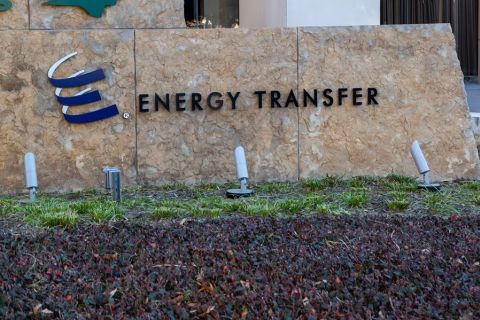The 4,500-square-mile Maverick Basin, in Maverick, Dimmit and southwestern Zavala counties, Texas, is finally coming into its own. For decades, explorers were frustrated by an inability to find commercial oil and gas deposits. A 40-million-barrel field, the Sacatosa in Maverick County, discovered in 1956 by Conoco, appeared to be a one-hit wonder in the area. A few independents refused to forsake the basin, however, teased by the numerous oil and gas shows that greeted wildcatters. Finally, persistence and newer technologies such as horizontal drilling and 3-D seismic have unlocked considerable resources in the hardscrabble basin. The Exploration Co., headquartered in San Antonio, has been spearheading this effort. The company holds 554,000 gross acres in the basin, with an average working interest of more than 85%, much of it near the town of Eagle Pass. At the end of 2004, TXCO's net production exceeded 19 million cubic feet of gas equivalent per day, almost all from the Maverick Basin. TXCO is currently working seven different plays in the basin, ranging from low-risk to high-risk. The carbonate basin is prospect-rich, it says, with more than 20 productive intervals. TXCO is pursuing plays in the Escondido, at 1,000 feet; the Olmos coalbed-methane play at 1,500 feet; the San Miguel at 1,800 feet; the Georgetown at 3,000 feet; Glen Rose reefs and shoals at 5,000 feet; the Glen Rose porosity at 6,500 feet; and the Jurassic at 16,000 feet. It has 3-D seismic covering 80% of its acreage block, and it has identified more than 1,500 prospective locations. TXCO was on pace in 2004 to spend its $33-million capital budget in the Maverick, drilling 60 new wells and reentering nine existing wells. The Upper Cretaceous Georgetown is one of the newest plays, and it's drawing a lot of industry attention. A fractured limestone, the Georgetown is a predominately gas-charged, blanket reservoir that lies above the Glen Rose interval. Historically, the Georgetown was produced in Wipff-Fitzpatrick Field, discovered in the 1960s. There, vertical wells drilled in a long, narrow graben made 4.5 million barrels of oil from depths of about 2,000 feet. But, many dry holes were drilled by many companies in futile attempts to expand that play to a wider area. "We've been in the basin a long time, and knew that the Georgetown was here," says James Sigmon, president. The company had been drilling Glen Rose wells throughout its extensive holdings, and it had logged many holes that exhibited an interesting porosity zone in the Upper Georgetown. "Sometimes, we saw up to 30% limestone porosity, density-neutron crossover gas effect and gas shows-all the beautiful things you like to see when looking for gas wells." These widespread, oil- and gas-filled porosity zones occur throughout the 700-foot-thick Georgetown limestone. "The areal extent of this stratigraphic entrapment is remarkable, and no down-dip water contact has been established to date," says Robert Scott, chief geologist. TXCO dipped its toe into the Georgetown, coring several wells. It discovered that while the porosity zone did carry significant hydrocarbons, it was hampered by very low permeabilities of less than 0.1 millidarcy. The company attempted a few completions in the Georgetown, but results were marginal: volumes were generally 50,000 to 100,000 cubic feet of gas per day. As TXCO collected more 3-D seismic over its extensive acreage position, however, it began to notice an abundance of northeast-southwest trending faults in the Georgetown interval. Initially, the company decided to snuggle some wells up close to the downthrown sides of the faults, where it thought the carbonate would be more broken up. "Our success doing that was poor," says Sigmon. "We didn't get wells that were any better than the old wells." Its next step was to deviate the wells and try to deliberately cut faults in the Georgetown. It drilled three tests with this technique, and finally made some decent completions. The real breakthrough came from an unexpected direction, however. TXCO had begun to use coherency processing technology on its 3-D seismic volumes to define targets in its Glen Rose porosity play, which lies below the Georgetown. This technique, when applied to the Georgetown, compares seismic traces to determine areas of discontinuity, which will highlight areas of faulting and fracturing. As TXCO studied the coherency processing results, it noticed numerous coherency-defined fault trends were present. The company decided to try a horizontal reentry on an existing well, drilling a lateral along the top of an Upper Georgetown porosity zone to intersect several coherency anomalies. This test, in October 2003, was completed for 3 million cubic feet of gas per day. "The Vivian #1-687 is a very good well, and it is still producing at the rate of 1.5 million cubic feet per day," says Sigmon. "It kicked off our play." Since the high-tech rebirth of the Georgetown, TXCO has drilled or reentered 31 horizontal wells, 24 of which are successful. In late 2004, it was producing gross volumes of 11 million cubic feet of gas and 275 barrels of oil per day from the Georgetown. At press time, it was running two rigs and had plans to drill 40-plus wells in the Georgetown during 2005. "We anticipate that the Georgetown play will be quite significant to us," says Scott. At first, TXCO drilled Georgetown wells throughout its 50-mile-long acreage block. It quickly discerned that the deeper, southern end was gas-prone, while the northern, up-dip edge was oil-prone. Each horizontal gas well, drilled to a vertical depth of around 4,000 feet with a 2,000-foot lateral, costs about $900,000 and is expected to recover an average of 750 million cubic feet of gas apiece. The wells are drilled underbalanced with water and clear fluids, and the laterals are acidized. Overall, TXCO now has 12 gas and 12 oil wells, with the oil completions expected to make approximately 50,000 barrels each. "The verdict is still out on the economics of the oil wells, because the reservoir has such low permeabilities," says Sigmon. "We need to figure out some way to improve the oil recoveries." Now, the company is focusing on the deeper, gas-prone portion of the play. It has an inventory of more than 300 drillable locations on its 130,000-acre Comanche block and 12,200-acre Hollimon block, in central Maverick and western Dimmit counties. It is also looking at a porosity interval in the Lower Georgetown that is pervasive throughout its leasehold, in which it has drilled one well. It expects to announce results on that test shortly. If imitation is the highest form of flattery, TXCO should feel very flattered. Several competitors have popped up in the middle of the Georgetown play, including Rockport Georgetown Holdings LLC, of Bellaire, Texas, and Houston-based operators CMR Energy LP and Touchstone Resources USA Inc. The latter firm is in a Maverick Basin exploratory joint venture with Blue Star Oil & Gas Ltd. and Maverick Oil & Gas Inc. The partners have indicated that their 20,000-acre block in central Maverick County could eventually host 80 horizontal Georgetown wells. Sigmon says, "We're still early in the play. I think it will turn out to be a statistical play of some sort, but we haven't drilled enough wells to define it yet. The Georgetown looks very promising, and it's one more example of the potential that exists in the Maverick Basin."
Recommended Reading
Oil and Gas Chain Reaction: E&P M&A Begets OFS Consolidation
2024-04-26 - Record-breaking E&P consolidation is rippling into oilfield services, with much more M&A on the way.
Exxon Mobil, Chevron See Profits Fall in 1Q Earnings
2024-04-26 - Chevron and Exxon Mobil are feeling the pinch of weak energy prices, particularly natural gas, and fuels margins that have cooled in the last year.
Marathon Oil Declares 1Q Dividend
2024-04-26 - Marathon Oil’s first quarter 2024 dividend is payable on June 10.
Talos Energy Expands Leadership Team After $1.29B QuarterNorth Deal
2024-04-25 - Talos Energy President and CEO Tim Duncan said the company has expanded its leadership team as the company integrates its QuarterNorth Energy acquisition.
Energy Transfer Ups Quarterly Cash Distribution
2024-04-25 - Energy Transfer will increase its dividend by about 3%.




